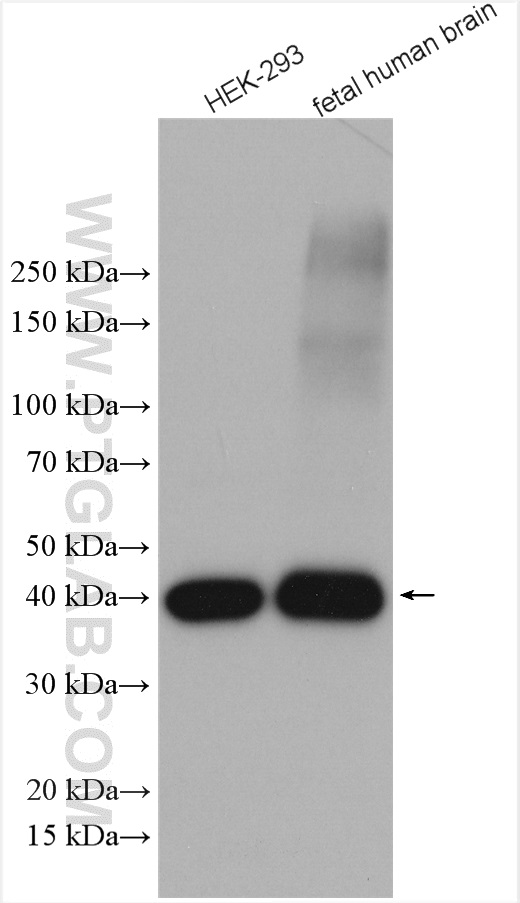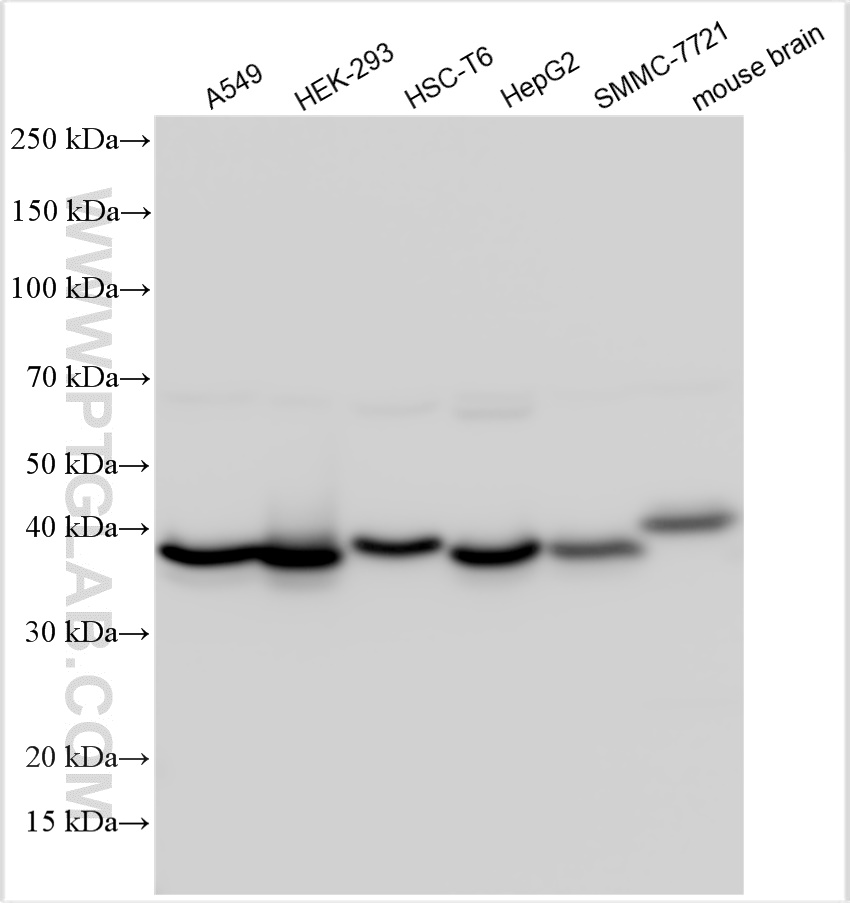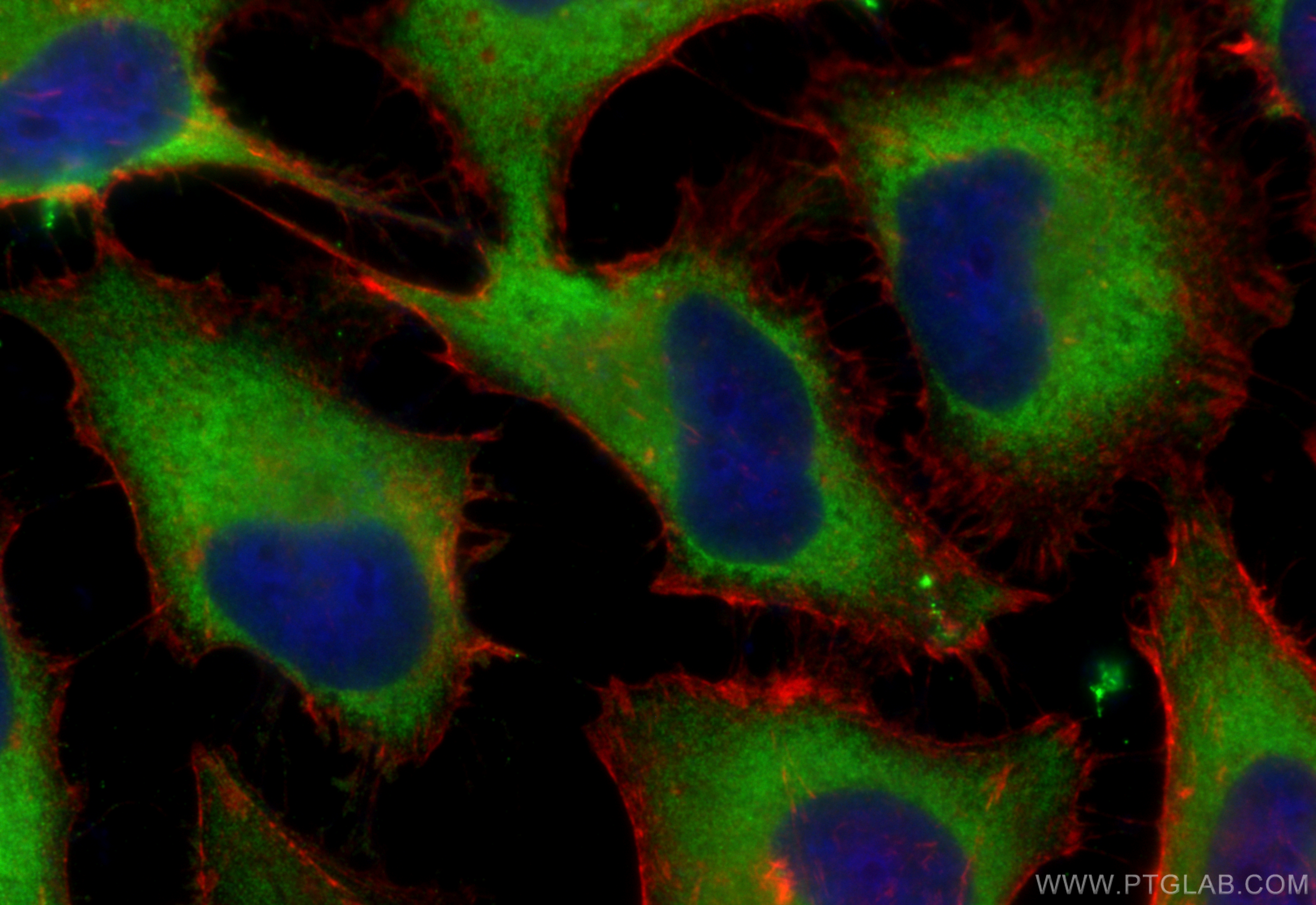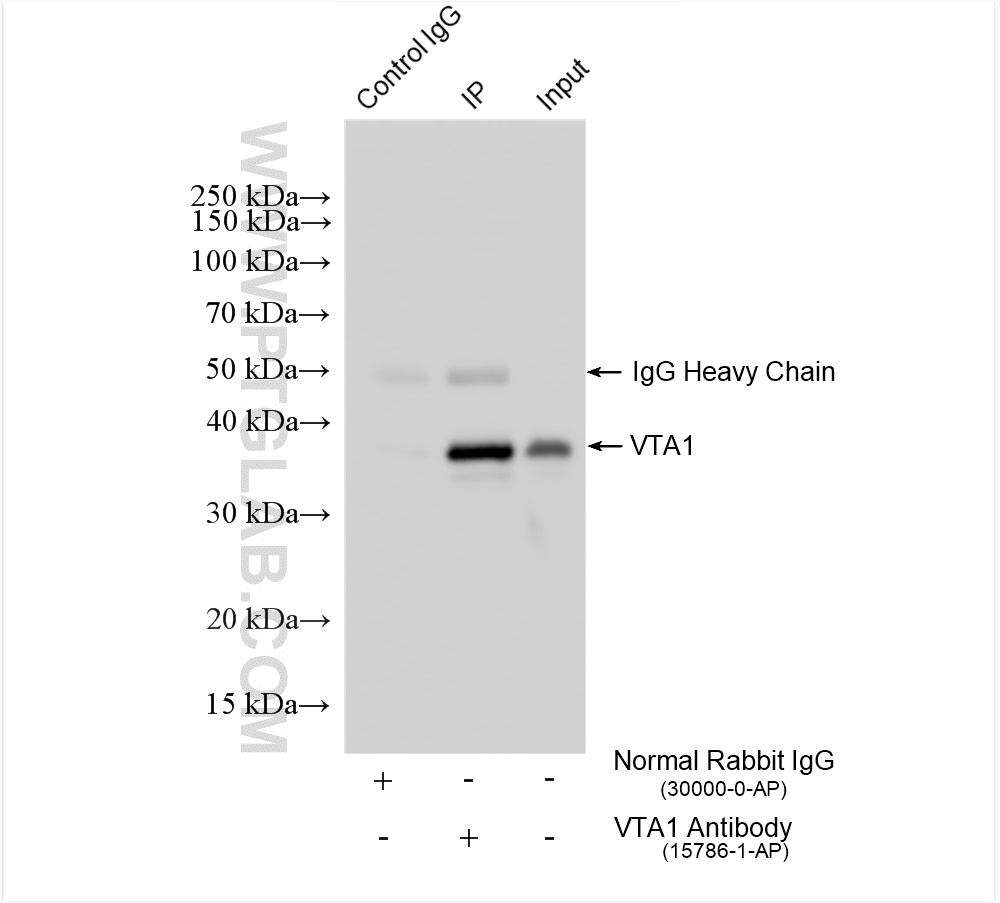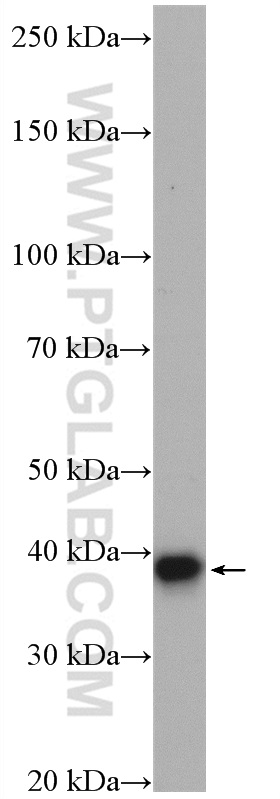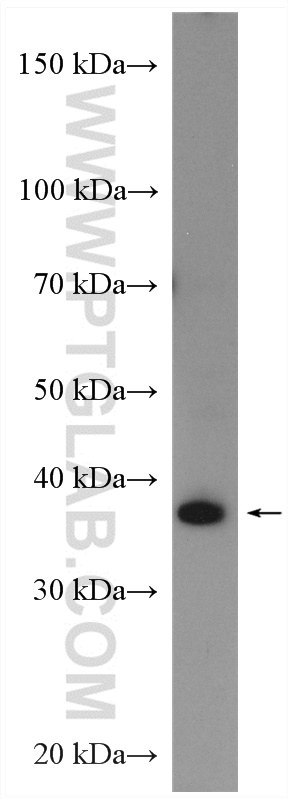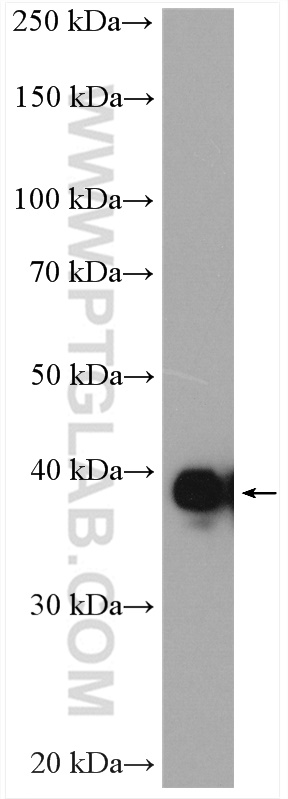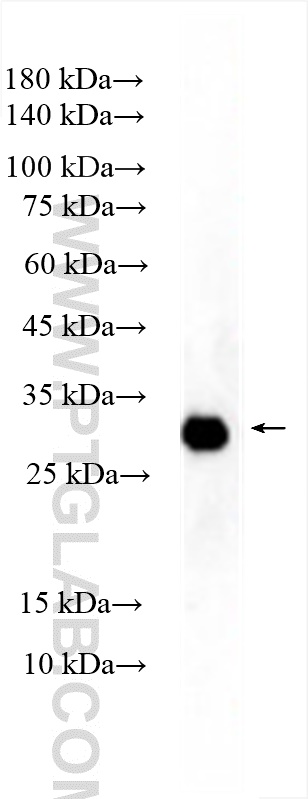验证数据展示
经过测试的应用
| Positive WB detected in | HEK-293 cells, A549 cells, HepG2 cells, human urine sample, K-562 cells, rat brain tissue, HSC-T6 cells, SMMC-7721 cells, mouse brain tissue, fetal human brain tissue |
| Positive IP detected in | HEK-293 cells |
| Positive IF/ICC detected in | HeLa cells |
推荐稀释比
| 应用 | 推荐稀释比 |
|---|---|
| Western Blot (WB) | WB : 1:2000-1:16000 |
| Immunoprecipitation (IP) | IP : 0.5-4.0 ug for 1.0-3.0 mg of total protein lysate |
| Immunofluorescence (IF)/ICC | IF/ICC : 1:200-1:800 |
| It is recommended that this reagent should be titrated in each testing system to obtain optimal results. | |
| Sample-dependent, Check data in validation data gallery. | |
发表文章中的应用
| WB | See 1 publications below |
产品信息
15786-1-AP targets VTA1 in WB, IF/ICC, IP, ELISA applications and shows reactivity with human, mouse, rat samples.
| 经测试应用 | WB, IF/ICC, IP, ELISA Application Description |
| 文献引用应用 | WB |
| 经测试反应性 | human, mouse, rat |
| 文献引用反应性 | human |
| 免疫原 | VTA1 fusion protein Ag8485 种属同源性预测 |
| 宿主/亚型 | Rabbit / IgG |
| 抗体类别 | Polyclonal |
| 产品类型 | Antibody |
| 全称 | Vps20-associated 1 homolog (S. cerevisiae) |
| 别名 | HSPC228, DRG-1, DRG1, DRG 1, Dopamine-responsive gene 1 protein |
| 计算分子量 | 307 aa, 34 kDa |
| 观测分子量 | 34 kDa |
| GenBank蛋白编号 | BC006989 |
| 基因名称 | VTA1 |
| Gene ID (NCBI) | 51534 |
| RRID | AB_2288524 |
| 偶联类型 | Unconjugated |
| 形式 | Liquid |
| 纯化方式 | Antigen affinity purification |
| UNIPROT ID | Q9NP79 |
| 储存缓冲液 | PBS with 0.02% sodium azide and 50% glycerol , pH 7.3 |
| 储存条件 | Store at -20°C. Stable for one year after shipment. Aliquoting is unnecessary for -20oC storage. |
实验方案
| Product Specific Protocols | |
|---|---|
| WB protocol for VTA1 antibody 15786-1-AP | Download protocol |
| IF protocol for VTA1 antibody 15786-1-AP | Download protocol |
| IP protocol for VTA1 antibody 15786-1-AP | Download protocol |
| Standard Protocols | |
|---|---|
| Click here to view our Standard Protocols |
